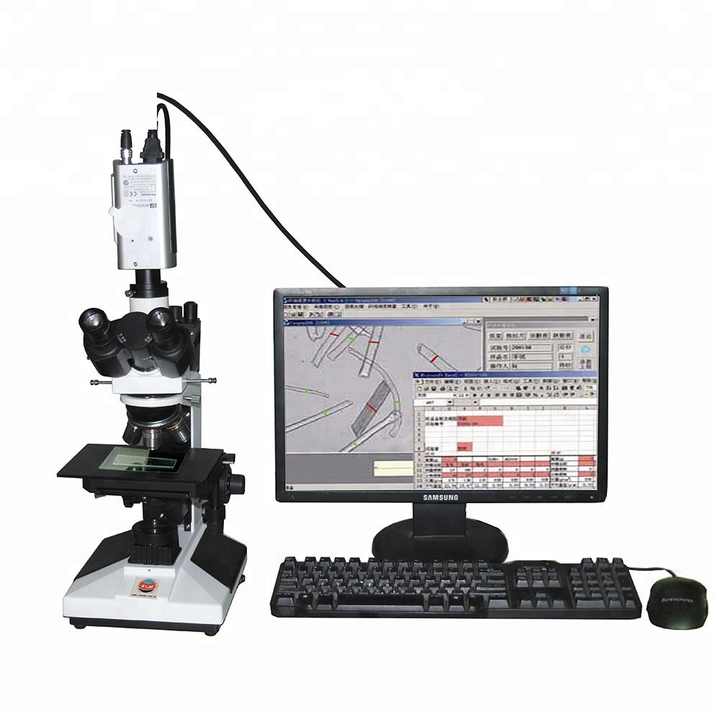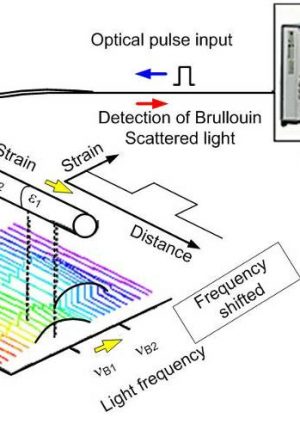Key Factors When Selecting an Optical Fibre Diameter Analyser
Key Factors When Selecting an Optical Fibre Diameter Analyser
Blog Article
Optimize Your Fiber Optic Efficiency: Comprehending Optical Fibre Diameter Analyser Technology
The efficiency of fiber optic systems is critically influenced by the accuracy of their diameter, an element usually forgot in the search of optimum signal integrity. Recognizing the modern technology behind optical fiber diameter analysers exposes the complex equilibrium between dimension precision and manufacturing high quality. These tools not just boost compliance with market requirements but also supply real-time insights that can preemptively resolve prospective problems. Nevertheless, the effects of their use prolong past plain dimension; they can basically alter the landscape of fiber optic efficiency. What aspects should one take into consideration to harness their full potential?
Significance of Optical Fiber Size
The size of optical fiber plays an important duty in figuring out the performance and efficiency of communication systems. Conversely, smaller diameters have a tendency to sustain fewer modes, which can improve signal clearness and reduce crosstalk.

Furthermore, comprehending the size's ramifications can cause set you back savings by minimizing the requirement for signal boosting and repeaters in substantial networks (optical fibre diameter analyser). To conclude, the importance of optical fiber diameter can not be overstated, as it straight affects the overall performance and dependability of modern-day communication systems

Just How Diameter Affects Signal Quality
Signal top quality in optical fibre systems pivots significantly on the size of the fiber. The diameter influences several key specifications, consisting of attenuation, transmission capacity, and modal dispersion. A smaller diameter can cause higher depletion rates, causing signal loss as light travels via the fiber. This depletion can jeopardize the integrity of the transmitted information, leading to a decline in signal high quality, particularly over cross countries.
Alternatively, larger sizes typically permit for enhanced light capture and minimized modal dispersion, enhancing signal clarity. In multimode fibres, a bigger core diameter can support numerous light settings, but it may additionally present intermodal dispersion, which can degrade signal quality. Selecting the ideal fibre diameter is critical for attaining the wanted performance in specific applications.
In addition, the interaction in between the fibre diameter and the wavelength of the light made use of plays an important role in determining the effective transmission range and general signal integrity. Recognizing just how fibre size influences signal quality is important for network designers and engineers aiming to maximize optical fibre systems for trusted, high-speed information transmission.
Introduction of Size Analyser Technology
In lots of optical fibre manufacturing procedures, exact dimension of fibre diameter is important for ensuring constant efficiency and top quality (optical fibre diameter analyser). Diameter analysers are sophisticated tools developed to assess the physical measurements of optical fibers with high accuracy. They employ sophisticated optical and laser technologies to determine the size, ovality, and concentricity of the fiber, hence offering important information for top quality control
These analysers can operate in-line during the production procedure or as part of off-line screening methods. In-line systems enable real-time tracking, allowing producers to adjust parameters quickly, i was reading this therefore maintaining optimum production conditions. Off-line analysers, on the other hand, give comprehensive analyses of sets, ensuring that any type of deviations from defined tolerances are determined and dealt with.
Diameter analysers significantly add to the decrease of flaws in optical fibres, boosting total item integrity. By regularly measuring essential specifications, these innovations assist in compliance with industry requirements and requirements. As the demand for high-performance optical fibres continues to climb, the duty of size analysers comes to be increasingly important in achieving the wanted top quality and efficiency requirements in fiber optic systems.
Trick Attributes of Fiber Size Analysers
Although various models of fibre size analysers exist, they typically share numerous vital attributes that improve their capability and dependability. One of the most considerable attributes is high-resolution dimension abilities, which ensure precise size readings, vital for keeping quality assurance in fibre manufacturing. In addition, many analysers integrate advanced optical sensing units developed to identify minute variants in fibre size, therefore providing very useful information for procedure optimization.
An additional vital function is real-time surveillance, permitting operators to get immediate feedback on fibre size throughout the production process (optical fibre diameter analyser). This capability facilitates quick adjustments and reduces the likelihood of issues. Lots of analysers likewise come furnished with user-friendly interfaces, making it possible for operators to easily browse with data and setups outputs
Furthermore, durable information storage space and analysis functionalities are important for tracking historic performance trends and making certain compliance with market requirements. Some designs also offer connectivity alternatives for assimilation into existing manufacturing control systems, enhancing overall functional effectiveness. Last but not least, compact and portable designs permit versatile deployment within manufacturing environments, guaranteeing that quality control procedures are smooth and effective. These features collectively contribute to the efficacy of fibre size analysers in maximizing fiber optic performance.
Ideal Practices for Fibre Optimization

First, routine calibration of optical fibre diameter analysers is vital. This guarantees exact measurements and lessens possible inconsistencies that can impact efficiency. Next, preserving a tidy workplace is crucial; dirt and impurities can lead to signify destruction.
Additionally, it is essential to choose fibers that satisfy particular application needs. This involves examining aspects such as attenuation, transmission capacity, and environmental conditions. Correct installation strategies must likewise be complied with, including preventing sharp bends and extreme tension, which can compromise fiber stability.
Additionally, using innovative tracking systems can facilitate real-time efficiency evaluations, enabling prompt recognition of problems. Routine screening and upkeep should be performed to make sure that fibres continue to be within optimal functional specifications.
Finally, training employees on the most recent fibre optimization innovations and techniques will improve their ability to apply reliable methods. By following these finest practices, companies can considerably improve the performance and lifespan of their optical fibre systems, making certain effective communication and information transfer.
Verdict
To conclude, the assimilation of optical fibre size analyser innovation is vital for making the most of fibre optic efficiency. By making sure accurate measurements of fibre measurements, these analysers substantially enhance signal high quality click here for info and reduce losses during information transmission. Routine calibration and maintenance of the analysers are essential to maintain optimum performance and compliance with market criteria. Inevitably, the application of this innovation facilitates boosted data transmission prices and strengthens signal honesty, adding to read here the total effectiveness of fiber optic systems.
Signal high quality in optical fiber systems hinges considerably on the diameter of the fibre.In numerous optical fiber manufacturing processes, precise dimension of fiber size is necessary for guaranteeing consistent efficiency and top quality. As the need for high-performance optical fibres continues to increase, the role of diameter analysers ends up being significantly important in accomplishing the preferred top quality and performance requirements in fibre optic systems.
These attributes jointly add to the efficacy of fiber size analysers in maximizing fiber optic efficiency.
In conclusion, the assimilation of optical fiber diameter analyser modern technology is essential for optimizing fiber optic efficiency.
Report this page